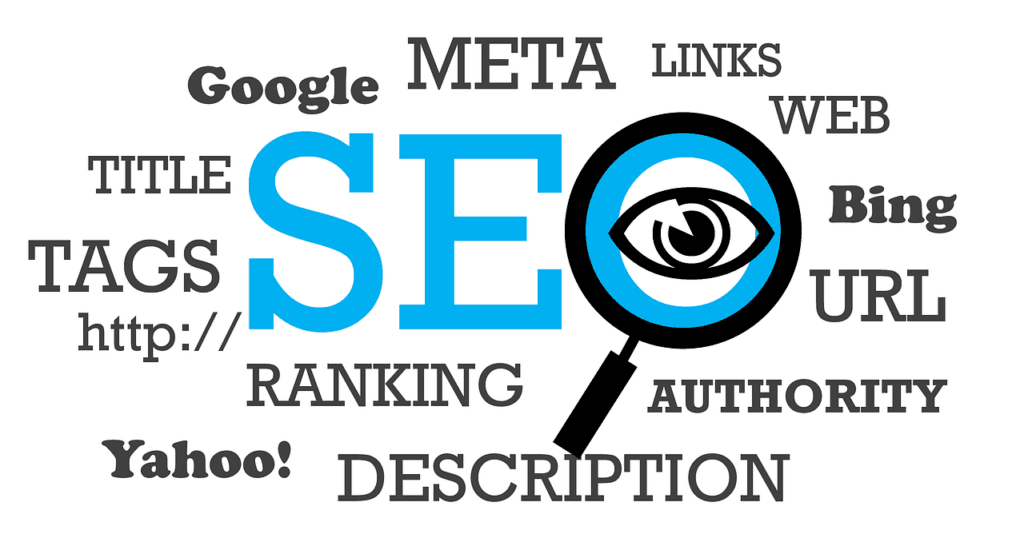This Article has been revised, edited and added to, by Poulomi Chakraborty.
- Unpacking Core Web Vitals
- Understanding Each Vital In-depth
- The Driving Forces Behind Core Web Vitals
- Best Practices for Optimization
- Broader Implications for Web Development
- The Strategic Importance of Core Web Vitals for Startups
- Understanding the Nuances of Core Web Vitals
- Strategic Framework for Core Web Vitals Optimization
- Advanced Strategies for Core Web Vitals Optimization
- A Call to Action for Startup Founders
- Why Core Web Vitals Matter for UX and SEO
- Strategies to Optimize Largest Contentful Paint (LCP)
- Enhancing First Input Delay (FID)
- Tackling Cumulative Layout Shift (CLS)
- Implementing and Measuring Core Web Vitals
- Integrating Core Web Vitals with Overall SEO Strategy
- Conclusion
The landscape of SEO and user experience (UX) has always been dynamic, evolving with technological advancements and changing user expectations. Google, as the leading search engine, continuously refines its algorithms to provide users with the best online experience. One such shift is the emphasis on Core Web Vitals – a set of metrics aimed at quantifying web page user experiences. These metrics are now a part of the ranking algorithm, underscoring their importance. In this comprehensive guide, we will explore the intricacies of Core Web Vitals, the value they bring to UX and SEO, and a roadmap to successful implementation.
Unpacking Core Web Vitals

Google’s introduction of Core Web Vitals is a testament to its relentless pursuit of enhancing user experiences on the web. Recognizing the correlation between user satisfaction and website performance, Google ushered in these new metrics, aiming to provide quantifiable data that websites can leverage to enhance their user experiences.
Understanding Each Vital In-depth
Largest Contentful Paint (LCP):
- The Essence: LCP essentially observes the time a page takes to paint the most significant content on the screen. It’s the bridge between user perception and actual page speed.
- Impact Factors: Factors that might impede LCP include slow server response times, render-blocking JavaScript and CSS, slow resource load times, and client-side rendering.
- Optimal Metric: For the majority of users, LCP should occur within 2.5 seconds of page loading.
First Input Delay (FID):
- The Essence: FID is a reflection of a page’s interactivity and responsiveness. It gauges the time between a user’s first interaction and the browser’s response to that interaction.
- Impact Factors: Main thread work, which could be caused by hefty JavaScript execution, can delay processing user input and thus impede FID.
- Optimal Metric: Pages should aim for an FID of less than 100 milliseconds to ensure a responsive site.
Cumulative Layout Shift (CLS):
- The Essence: CLS monitors the visual stability of a page. It quantifies those unexpected layout shifts which can be frustrating for users.
- Impact Factors: Images without dimensions, ads or embeds without reserved space, dynamically injected content, and web fonts causing FOIT/FOUC can impact CLS.
- Optimal Metric: A score below 0.1 is considered good, ensuring users aren’t disoriented with unexpected content shifts.
The Driving Forces Behind Core Web Vitals
The significance of these vitals extends beyond just SEO; they are a reflection of a site’s health concerning user satisfaction:
- Enhanced User Experience: The essence of these metrics is to provide users with a swift, interactive, and visually stable browsing experience.
- Performance Benchmarking: With quantifiable metrics, businesses can benchmark their website’s performance against industry standards and competitors.
- Informed Optimizations: Rather than relying on intuition or generic best practices, webmasters can now make data-backed optimizations tailored to their site’s unique needs.
Best Practices for Optimization
- Utilize Google Tools: Google offers a plethora of tools, such as the Chrome DevTools, Lighthouse, and Search Console, which can provide insights into how a site fares concerning Core Web Vitals.
- Opt for Performance-first Plugins and Themes: Especially relevant for platforms like WordPress, choosing lightweight, performance-optimized plugins and themes can make a significant difference.
- Engage in Continuous Monitoring: As websites evolve, so do their performance metrics. Regularly monitoring these vitals ensures that any issues are promptly identified and rectified.
Broader Implications for Web Development
- Emphasis on Performance: While aesthetics and functionality will always remain pivotal, performance is now firmly in the spotlight, urging developers to adopt a performance-first approach.
- Shift in Development Practices: Developers might now prioritize practices like critical CSS inlining, asynchronous loading of scripts, and more to cater to these vitals.
- Mobile-first Approach: Given the growing number of mobile users, ensuring mobile optimization in line with Core Web Vitals will gain paramount importance.
The Strategic Importance of Core Web Vitals for Startups
For startup founders, understanding and optimizing Core Web Vitals is not merely a technical exercise; it is a strategic endeavor that directly impacts your startup’s ability to engage customers, convert leads, and outperform competitors in the digital arena. In an ecosystem where user experience can make or break a business, paying attention to these vitals becomes a cornerstone for building a robust online presence.
Understanding the Nuances of Core Web Vitals
The Interplay of Vitals and User Psychology
Each Core Web Vital—Largest Contentful Paint (LCP), First Input Delay (FID), and Cumulative Layout Shift (CLS)—is deeply rooted in user psychology. LCP, for instance, isn’t just about loading times; it’s about the perceived immediacy of user interaction. The faster the content appears, the more reliable and efficient a website feels. This immediacy is crucial for startups looking to establish trust and reliability in their user base.
FID highlights the importance of responsiveness to user inputs, a direct indicator of a site’s reactivity to user needs. A low FID means that a website is not just a static brochure but a dynamic platform that engages with its users’ actions promptly.
CLS, on the other hand, is about predictability and stability—qualities that subconsciously enhance user trust. A site with minimal layout shifts feels more secure and professionally curated, which translates to higher user confidence in the brand.
Leveraging Core Web Vitals for Competitive Advantage
Startups can turn Core Web Vitals into a competitive advantage by focusing on them from the earliest stages of web development. This proactive approach not only ensures a solid foundation for SEO but also embeds a culture of user-centric design and development within the team.
Strategic Framework for Core Web Vitals Optimization
Prioritizing User Experience in Product Roadmaps
Incorporating Core Web Vitals into your product roadmap involves a shift in how performance is perceived. It’s not just about technical benchmarks but about enhancing the overall user journey. This means prioritizing tasks that directly improve these vitals, such as optimizing critical rendering paths, investing in server infrastructure, or refining content delivery strategies.
Building a Performance-first Culture
Fostering a culture that values performance means encouraging every team member, from developers to designers, to consider the impact of their work on Core Web Vitals. Regular training sessions, workshops, and performance review meetings can help embed this culture deeply within the startup.
Continuous Monitoring and Iteration
Optimizing for Core Web Vitals is an ongoing process that requires continuous monitoring, testing, and iteration. Leveraging tools like Google’s PageSpeed Insights or Lighthouse for regular audits can provide actionable insights for improvement. Moreover, incorporating real-user monitoring (RUM) tools can offer a glimpse into how actual users experience your site, allowing for more nuanced optimizations.
Advanced Strategies for Core Web Vitals Optimization
Beyond the basics, there are advanced strategies that startups can employ to further enhance their Core Web Vitals:
- Adaptive Image Serving: Implementing solutions that serve different image sizes based on the user’s device and connection speed can drastically improve LCP.
- Critical CSS: Inline critical CSS and asynchronously load the rest to speed up perceived load times, directly impacting LCP and FID.
- Smart JavaScript Loading: Employing modern JavaScript loading strategies, such as dynamic imports or module/nomodule patterns, can significantly reduce FID.
- Stability Through Reserved Space: Explicitly reserving space for lazy-loaded content or ads can prevent layout shifts, improving CLS.
A Call to Action for Startup Founders
As a startup founder, embracing and optimizing Core Web Vitals is not just about enhancing site performance; it’s about committing to a superior user experience that drives engagement, conversion, and retention. By strategically incorporating these vitals into your digital strategy, you not only set up your startup for success in search rankings but also establish a strong foundation for long-term user satisfaction and loyalty.
Why Core Web Vitals Matter for UX and SEO

With countless websites vying for attention, providing an optimized user experience is not just an added advantage, but a necessity. Here’s how Core Web Vitals influence both UX and SEO:
- User Retention and Engagement: Slow-loading pages or ones with shifting layouts can frustrate users, making them more likely to exit. Optimized pages, in contrast, encourage longer stays and deeper engagement.
- Improved Organic Ranking: As these vitals are a part of Google’s ranking factors, optimized websites stand a better chance of appearing higher in search results.
- Trust and Credibility: A fast and interactive website communicates professionalism and a commitment to user experience, enhancing brand trust.
- Conversion Rates: A seamless user experience, with fast load times and stable layouts, can boost conversions, vital for e-commerce or service-based sites.
The Synergy Between UX, SEO, and Core Web Vitals
For startup founders, the journey towards achieving a superior digital footprint involves a harmonious blend of user experience (UX) optimization and search engine optimization (SEO). Core Web Vitals serve as the linchpin in this process, bridging the gap between a site’s performance and its ability to rank higher on search engines. Understanding this synergy is crucial for startups aiming to carve out a niche in their respective markets.
Deepening User Engagement Through Core Web Vitals
Enhancing User Satisfaction for Long-Term Growth
User satisfaction is paramount in today’s competitive digital landscape. Startups that prioritize Core Web Vitals are essentially focusing on key elements—loading, interactivity, and visual stability—that contribute significantly to user satisfaction. A website that loads quickly, responds promptly to user interactions, and maintains visual stability throughout the user journey is more likely to retain users, encourage exploration, and foster engagement. This engagement is a critical driver for organic growth, as satisfied users are more likely to return, convert, and recommend the site to others.
Building a Foundation for Trust and Credibility
Trust and credibility are the cornerstones of any successful online presence. For startups, where first impressions can dictate long-term success, ensuring a website meets or exceeds Core Web Vital benchmarks is a testament to the brand’s commitment to quality and user experience. A seamless and stable website not only enhances the brand’s professional image but also builds user trust, which is essential for nurturing long-term customer relationships.
Integrating Core Web Vitals into SEO Strategy
Core Web Vitals as a Differentiator in Search Rankings
In a sea of competitors vying for the top spot in search engine results pages (SERPs), Core Web Vitals offer a strategic advantage. Google has explicitly stated the importance of these metrics as ranking factors, meaning startups that optimize their sites accordingly can achieve better visibility and organic reach. This optimization requires a nuanced approach, where technical enhancements are balanced with content quality and relevance, ensuring that the website appeals to both search algorithms and human users.
Leveraging Analytics for Insightful SEO Decisions
Data is a powerful tool in the arsenal of any startup. By leveraging analytics to monitor and analyze Core Web Vitals, startups can gain valuable insights into how users interact with their site and where improvements can be made. This data-driven approach allows for informed decisions that align SEO strategies with user expectations, leading to higher rankings and improved visibility in SERPs.
Advanced Considerations for UX and SEO Through Core Web Vitals
Prioritizing Mobile Experience
With the increasing prevalence of mobile internet usage, optimizing for mobile has become non-negotiable. Core Web Vitals are particularly pertinent in the mobile context, where users expect fast, responsive, and stable experiences on smaller screens. Startups should adopt a mobile-first design philosophy, ensuring that their websites are not only responsive but also optimized for the mobile user’s Core Web Vitals.
Content Optimization in Harmony with Technical Performance
While technical optimization for Core Web Vitals is critical, it should not come at the expense of content quality and relevance. Startups must strike a balance, ensuring that their content strategy aligns with SEO best practices while also serving the user’s needs and expectations. This holistic approach to content and technical performance reinforces the site’s value proposition, enhancing both user engagement and search engine rankings.
Core Web Vitals as a Catalyst for Digital Excellence
For startups looking to thrive in the digital ecosystem, optimizing for Core Web Vitals is not just a technical task—it’s a strategic imperative that supports long-term business objectives.
By enhancing user experience and aligning with SEO best practices, startups can not only improve their search engine rankings but also build a loyal user base. The commitment to Core Web Vitals reflects a broader commitment to quality, user satisfaction, and continuous improvement, laying the groundwork for sustainable growth and success in the digital age.
Strategies to Optimize Largest Contentful Paint (LCP)
Optimizing LCP revolves around enhancing page load speeds. An optimal LCP is achieved when the primary content of a page loads within 2.5 seconds. Here’s how to achieve that:
- Optimize Images: Large, uncompressed images can significantly slow down a page. Using next-gen formats like WebP, compressing images, and leveraging lazy loading can improve LCP.
- Reduce Server Response Time: Investing in better server hosting, using a Content Delivery Network (CDN), and optimizing server-side rendering can result in quicker server responses.
- Minimize CSS and JavaScript: Any script or stylesheet can block rendering. By minimizing and compressing these files, prioritizing critical ones, and deferring non-critical ones, you can improve load times.
- Preload Important Resources: Using the
preloadattribute for key resources can ensure they’re loaded early, enhancing LCP.
Enhancing Site Speed Through Advanced Optimization Techniques
Optimizing the Largest Contentful Paint (LCP) metric is pivotal for startups aiming to deliver a swift and seamless user experience. As the digital landscape becomes increasingly competitive, the ability to quickly display the most significant piece of content on your site can significantly impact user engagement and satisfaction. Below, we delve into strategies that go beyond the basics, providing a roadmap for startups to achieve superior LCP scores.
Leveraging Modern Image and Asset Delivery Techniques
Implementing Advanced Image Optimization Strategies
High-resolution images are often the largest contributors to slow page loads. To tackle this, startups should consider more than just compression. Advanced strategies like adaptive image sizing, where images are served in sizes appropriate to the user’s device and viewport, can significantly reduce unnecessary data load. Furthermore, employing newer image formats such as AVIF, which offers superior compression to formats like WebP, can further enhance loading times without compromising image quality.
Utilizing Progressive Image Loading
Progressive image loading is a technique where a low-quality version of an image is loaded first, which is then replaced by the higher-quality version. This approach gives users the perception of a faster load time, as content appears to be loaded on the screen more quickly. Implementing such techniques can improve the user experience by reducing perceived loading times.
Optimizing Server and Hosting Solutions
Choosing the Right Hosting Environment
The choice of hosting can dramatically impact site speed and, by extension, LCP scores. Startups should consider investing in premium hosting solutions that offer faster server response times and better overall performance. Cloud-based hosting solutions with automatic scaling can accommodate traffic spikes without sacrificing loading times, ensuring consistent performance even during peak usage.
Adopting a CDN for Global Reach
Content Delivery Networks (CDNs) are crucial for startups aiming to serve a global audience. By caching content at edge locations closer to the user, CDNs reduce the distance data has to travel, thereby decreasing loading times. Startups should look for CDN providers that offer real-time performance analytics, allowing for ongoing optimizations based on user location and behavior.
Advanced Code Optimization Techniques
Streamlining Critical Rendering Path
Optimizing the critical rendering path—the sequence in which elements are loaded and displayed on the screen—can have a substantial impact on LCP. Techniques such as eliminating render-blocking resources, inline critical CSS, and deferring non-essential JavaScript can ensure that the most important content is loaded first and fast. This not only improves LCP but also enhances the overall user experience by making the site feel more responsive.
Efficiently Managing Third-party Scripts
Third-party scripts, such as analytics tools or chatbots, can significantly impact site performance. Startups should audit these scripts regularly and remove any that are not essential. For necessary scripts, consider loading them asynchronously or defer their loading until after the main content has been fully displayed to the user. This prioritization ensures that third-party scripts do not interfere with the site’s core content loading times.
Continuous Monitoring and Optimization
Embracing a Culture of Performance Monitoring
Optimizing for LCP is not a one-time task but a continuous process. Startups should integrate performance monitoring into their development and maintenance cycles. Tools like Google’s Lighthouse provide actionable insights not just for LCP but for all Core Web Vitals, enabling startups to make informed decisions about optimizations.
A Commitment to Excellence in User Experience
For startups, optimizing Largest Contentful Paint is more than a technical endeavor; it’s a commitment to delivering an exceptional user experience from the first interaction. By implementing advanced optimization strategies and fostering a culture of continuous performance improvement, startups can significantly enhance their digital presence, user satisfaction, and ultimately, their success in the competitive digital marketplace.
Enhancing First Input Delay (FID)

FID measures the time from when a user interacts with your page (like clicking a link) to when the browser responds. An optimal FID is less than 100 milliseconds. Here are strategies to enhance it:
- Minimize or Defer JavaScript: JS is often the culprit behind high FID. By breaking long tasks into smaller ones, deferring non-critical JS, and minimizing unnecessary JS, responsiveness can be improved.
- Use a Web Workers: They run JavaScript on a background thread, ensuring the main thread remains unblocked, which can enhance page responsiveness.
- Optimize Styles & Animations: Ensure styles and animations run smoothly, without causing undue strain on the browser, to improve responsiveness.
Mastering Interactivity for Optimal User Engagement
For startups, optimizing First Input Delay (FID) is essential for creating interactive experiences that captivate and retain users. In an era where user expectations for responsive and agile web interfaces are at an all-time high, ensuring minimal delay between user interactions and the application’s response is a key factor in building a loyal user base. This section explores advanced strategies and considerations to enhance FID, focusing on interactivity as a core component of user experience and engagement.
Strategic JavaScript Optimization
Prioritizing User Interaction Feedback
To minimize delays in user interactions, startups should prioritize the loading and execution of scripts that affect user input feedback. This involves identifying and refining the JavaScript that impacts buttons, links, and form inputs to ensure they are responsive from the moment the page starts to load. Techniques such as splitting code into smaller, more manageable chunks and loading them on demand can significantly reduce FID, as it ensures that only the necessary code is loaded and executed in response to user actions.
Leveraging Browser’s Idle Periods
Taking advantage of the browser’s idle periods for loading non-critical JavaScript can dramatically improve FID. The use of browser APIs like requestIdleCallback allows startups to schedule non-essential tasks during these idle times, ensuring that critical tasks related to user input and feedback are not delayed. This strategy optimizes the usage of the main thread, keeping it free for processing user interactions without delay.
Advanced Architectural Approaches
Implementing Web Workers for Complex Calculations
For web applications that require heavy computations, utilizing Web Workers can significantly enhance FID. By offloading complex calculations to a background thread, the main thread remains unblocked and available for user input, thereby reducing delays. Startups can strategically use Web Workers for tasks like data parsing, complex calculations, or even pre-fetching data, ensuring that the user interface remains responsive at all times.
Adopting the Single Page Application (SPA) Model
Single Page Applications (SPAs) offer a framework for minimizing FID by reducing the need for full page reloads. By dynamically updating the content in response to user actions, SPAs can provide a seamless interactive experience. However, it’s crucial to ensure that the initial load of an SPA is optimized and that the JavaScript powering these dynamic updates is efficiently managed to prevent any negative impact on FID.
Optimizing for Mobile Interactivity
Fine-tuning Touch Interactions
With the increasing prevalence of mobile usage, optimizing touch interactions is essential for improving FID on mobile devices. This involves implementing touch-friendly interfaces, optimizing tap targets for ease of interaction, and minimizing any delay in touch feedback. For startups, ensuring that mobile interactions are as responsive as desktop interactions is crucial for engaging the growing number of mobile users.
Responsive Design and Performance
Responsive design goes beyond visual adaptation to different screen sizes—it also involves optimizing performance across devices. By adopting responsive images, conditional loading, and other mobile-first performance optimizations, startups can ensure that their websites are not only visually appealing but also highly responsive, contributing to a superior mobile user experience.
Continuous Improvement through Monitoring and Feedback
To effectively enhance FID, startups should implement real-user monitoring (RUM) tools. RUM provides insights into how actual users interact with the website, allowing startups to identify bottlenecks and areas for improvement in real-time. By analyzing data from real-world usage, startups can make informed decisions to optimize interactivity and responsiveness based on user feedback and behavior patterns.
Elevating User Experience through Interactivity
Optimizing First Input Delay is a strategic imperative for startups aiming to offer superior user experiences. By focusing on advanced JavaScript optimization, adopting efficient architectural approaches, optimizing for mobile interactivity, and leveraging real-user feedback, startups can significantly enhance the responsiveness of their websites. This commitment to interactivity not only improves user engagement and satisfaction but also positions the startup for better SEO rankings and long-term success in the digital marketplace.

Related: Check out our free SEO suite

Tackling Cumulative Layout Shift (CLS)
CLS addresses visual stability. A good CLS score is less than 0.1. To minimize layout shifts:
- Assign Dimensions to Media: Always include width and height attributes for images, videos, and other media elements. This ensures the browser knows how much space to allocate, preventing content shifts.
- Stable Ad Elements: If using ads, ensure they have a dedicated space, so they don’t push content around when they load.
- Prefer Transform Animations: For animations, opt for the ‘transform’ attribute over others as it doesn’t trigger layout changes.
- Fonts and Loading: Use
font:display optionalto ensure text remains visible during font load, reducing shifts from font changes.
Securing Visual Stability for Enhanced User Trust
For startups, ensuring a seamless user experience is paramount, and visual stability plays a critical role in this endeavor. Cumulative Layout Shift (CLS) measures the unexpected shifting of web page elements while the page is still loading. High CLS scores can frustrate users, undermine trust, and lead to lower conversion rates. This section delves into strategic approaches and innovative solutions to minimize CLS, thereby enhancing user satisfaction and trust through visual stability.
Strategic Design and Development Approaches
Embracing a Stability-first Design Philosophy
Startups should adopt a stability-first design philosophy that prioritizes predictable and stable user experiences from the outset. This involves thoughtful design decisions, such as avoiding large dynamic content blocks that can shift unexpectedly or designing elements with size attributes in mind. By integrating stability considerations into the design process, startups can prevent layout shifts and enhance the overall user experience.
Implementing Responsive Layouts with CSS Grid and Flexbox
Modern CSS techniques, such as Grid and Flexbox, offer powerful and flexible layout options that can significantly reduce layout shifts. These techniques enable precise control over element positions and sizes, making it easier to create responsive designs that maintain their stability across different screen sizes and orientations. By leveraging these CSS technologies, startups can create visually stable and responsive websites that cater to a wide array of devices and user environments.
Advanced Loading Strategies for Media and Dynamic Content
Optimizing Media Loading with Aspect Ratio Boxes
One common cause of layout shifts is images and videos loading after other content, causing the page layout to change. Using aspect ratio boxes for media elements can prevent this by reserving space for media before it loads, ensuring the layout remains stable. This technique involves setting a placeholder of the same aspect ratio as the media, minimizing shifts when the media loads.
Dynamic Content Strategies for Minimal Impact
Dynamic content, such as ads or content loaded asynchronously, can cause layout shifts if not handled carefully. Startups can minimize the impact of dynamic content by:
- Predefining the size and space of dynamic content areas to prevent reflows.
- Using skeleton screens or placeholders to maintain layout stability as content loads.
- Loading dynamic content during idle times or after the main content has been rendered to minimize disruption to the user experience.
Leveraging Tools and Techniques for Continuous Optimization
Utilizing Tools for Measuring and Monitoring CLS
Continuous improvement in CLS requires regular monitoring and measurement. Tools like Google’s Lighthouse, WebPageTest, and Chrome DevTools provide insights into CLS performance, helping startups identify and address issues proactively. Incorporating these tools into the development and testing workflows enables ongoing optimization efforts, ensuring that visual stability remains a central focus.
Adopting a Performance Budget for CLS
Setting a performance budget for CLS is a strategic way to maintain visual stability standards. A performance budget establishes maximum acceptable scores for CLS and other performance metrics, guiding development and design decisions to stay within these thresholds. This approach ensures that performance and stability considerations remain integral to the website’s evolution, supporting a consistently excellent user experience.
Prioritizing Visual Stability for Competitive Advantage
Minimizing Cumulative Layout Shift is not just about improving scores; it’s about offering a superior, stable, and predictable user experience that builds trust and loyalty. For startups, focusing on visual stability through strategic design and development practices, advanced loading strategies, and continuous optimization is essential for achieving long-term success. By prioritizing visual stability, startups can differentiate themselves in a crowded market, fostering user satisfaction, engagement, and conversions.
Implementing and Measuring Core Web Vitals

You can’t optimize what you can’t measure. Tools like Google’s PageSpeed Insights, Chrome User Experience Report, and Lighthouse can measure your site’s vitals.
- Regular Audits: Conducting regular audits using these tools can provide insights into areas of improvement and gauge the impact of optimization efforts.
- Real-world vs. Lab Data: It’s essential to consider both lab data (controlled conditions) and real-world data (actual user experiences) to get a holistic view of your site’s performance.
- Stay Updated: Core Web Vitals, like all aspects of web technology, will evolve. Keep abreast of the latest changes and best practices to ensure continued optimization.
Building a Data-driven Culture for Web Vital Optimization
In the competitive digital marketplace, startup founders must embrace a data-driven approach to web development and optimization. Implementing and measuring Core Web Vitals is a critical strategy that not only boosts SEO but also ensures a superior user experience. This section provides strategic insights into integrating Core Web Vitals into the fabric of your startup’s operations, enabling continuous improvement and competitive advantage.
Strategic Implementation of Core Web Vitals
Integrating Core Web Vitals into Development Lifecycle
Startups should integrate Core Web Vitals into every stage of the web development lifecycle, from planning and design to development, testing, and deployment. This integration involves setting clear objectives for each vital, ensuring that the design and development teams have a shared understanding and focus. By prioritizing these metrics from the outset, startups can avoid costly reworks and ensure their websites are optimized for both users and search engines.
Adopting Agile Methodologies for Continuous Improvement
Agile methodologies provide a framework for rapid iteration and continuous improvement, which is essential for optimizing Core Web Vitals. By adopting an agile approach, startups can quickly respond to performance data, user feedback, and changing SEO guidelines. This flexibility allows for regular adjustments and optimizations, ensuring that the website remains competitive and user-centric.
Measuring Core Web Vitals for Insightful Analysis
Leveraging the Right Tools for Comprehensive Measurement
A wide range of tools is available for measuring Core Web Vitals, each offering different insights and data points. Startups should leverage a combination of tools for a comprehensive analysis, including:
- Google’s PageSpeed Insights for detailed performance reports and optimization suggestions.
- The Chrome User Experience Report for real-world user experience data across different devices and network conditions.
- Lighthouse for automated auditing of web pages and specific recommendations for improvement.
Implementing Real-User Monitoring (RUM) for Accurate Insights
While synthetic testing provides valuable insights, real-user monitoring (RUM) captures the actual experiences of users interacting with your website. This data is invaluable for understanding how real-world factors like device type, location, and network conditions affect Core Web Vitals. By implementing RUM, startups can gather accurate, user-centered performance data, enabling targeted optimizations that significantly enhance user experience.
Advanced Strategies for Core Web Vitals Optimization
Custom Performance Metrics for Deeper Insights
In addition to the standard Core Web Vitals, startups can define custom performance metrics that are uniquely aligned with their business goals and user experiences. These custom metrics can provide deeper insights into specific interactions or features critical to the startup’s value proposition. By tracking these custom metrics alongside Core Web Vitals, startups can gain a more nuanced understanding of their website’s performance and user satisfaction.
Benchmarking Against Competitors for Strategic Advantage
Understanding how your website’s Core Web Vitals compare to those of your competitors can offer strategic insights into competitive positioning and market opportunities. Startups should regularly benchmark their performance against industry standards and key competitors, using this data to identify areas for improvement and differentiation. This benchmarking can inform strategic decisions, helping startups to prioritize optimizations that will deliver the most significant competitive advantage.
Prioritizing Core Web Vitals for Sustainable Growth
For startup founders, implementing and measuring Core Web Vitals is a strategic imperative that extends beyond mere compliance with SEO best practices. It’s about building a data-driven culture that prioritizes user experience and leverages continuous improvement for sustainable growth.
By integrating Core Web Vitals into the development lifecycle, leveraging the right measurement tools, and adopting advanced strategies for optimization, startups can enhance their digital presence, foster user loyalty, and achieve long-term success in the digital ecosystem.
Integrating Core Web Vitals with Overall SEO Strategy

Core Web Vitals, while vital, are just a piece of the larger SEO puzzle. To ensure a well-rounded website performance, these metrics should be integrated into a broader SEO strategy. Here’s how:
- Content is Still King: Ensure your content is relevant, valuable, and optimized for keywords. Even the fastest website won’t retain users if the content isn’t compelling.
- Mobile Optimization: With a significant portion of users browsing on mobile, ensure your website is responsive. A fast desktop site that’s slow on mobile will undermine your efforts.
- Backlink Building: High-quality backlinks remain crucial for SEO. While working on vitals, don’t neglect building and maintaining a robust backlink profile.
- User Experience Beyond Speed: While Core Web Vitals focus heavily on speed and stability, overall UX—like site navigation, aesthetics, and functionality—shouldn’t be ignored.
Crafting a Unified SEO and User Experience Vision
For startup founders, integrating Core Web Vitals into an overall SEO strategy is not just about improving search rankings; it’s about forging a seamless alliance between technical SEO and user experience (UX) that drives organic growth and user retention. This holistic approach ensures that your website not only attracts users but also engages and retains them through superior performance and user experience.
Strategic Alignment of Core Web Vitals and SEO Objectives
Embedding UX into SEO Goals
Startups must recognize that Core Web Vitals are fundamentally user-centric metrics. As such, optimizing these vitals should be seen as a critical component of the user experience strategy, which in turn is intrinsically linked to SEO success. This involves aligning technical optimizations with the creation of valuable, engaging content and ensuring that site architecture promotes easy navigation and interaction, thereby supporting both UX and SEO goals.
Leveraging Core Web Vitals for Content Visibility
High-quality, relevant content is pivotal for SEO, but its visibility and effectiveness are significantly enhanced by a solid foundation of Core Web Vitals. For instance, ensuring that your site’s Largest Contentful Paint (LCP) falls within the optimal threshold can reduce bounce rates and increase the time users spend engaging with your content. Similarly, optimizing for First Input Delay (FID) and Cumulative Layout Shift (CLS) ensures that users can interact with your content without frustration, enhancing overall satisfaction and the likelihood of conversion.
Advanced Techniques for Integrating Core Web Vitals and SEO
Dynamic Content Optimization
Startups should employ dynamic content optimization strategies that adapt to user behavior and preferences while ensuring Core Web Vitals remain within target thresholds. This can include personalizing content delivery based on user history or location, optimizing real-time content updates for minimal impact on CLS, and employing server-side rendering for dynamic content to improve LCP and FID scores.
Semantic HTML and Accessibility Enhancements
Utilizing semantic HTML not only improves content accessibility but also aids search engines in understanding and ranking web pages. Enhancing accessibility, such as through keyboard navigation support and ARIA (Accessible Rich Internet Applications) roles, can indirectly improve Core Web Vitals by ensuring that all users, regardless of how they interact with your site, have a positive experience. This comprehensive approach to accessibility and semantic structure supports broader SEO objectives by making content more discoverable and engaging for a wider audience.
Measuring Success and Adapting Strategies
Establishing Core Web Vitals as Key Performance Indicators (KPIs)
To effectively integrate Core Web Vitals into an SEO strategy, startups should establish these metrics as key performance indicators (KPIs) for their websites. Regularly monitoring these KPIs alongside traditional SEO metrics such as organic traffic, keyword rankings, and backlink profiles enables startups to gauge the effectiveness of their integrated strategy and identify areas for improvement.
Continuous Learning and SEO Evolution
The digital landscape is continuously evolving, with search algorithms and user expectations constantly changing. Startups must adopt a mindset of continuous learning and adaptation, staying abreast of the latest developments in Core Web Vitals, SEO best practices, and web technologies. This proactive approach ensures that your SEO strategy remains effective and that your site continues to meet or exceed Core Web Vitals benchmarks, thereby sustaining and enhancing your competitive edge in the marketplace.
A Holistic Approach to Digital Excellence
Integrating Core Web Vitals with your overall SEO strategy is essential for creating a robust, user-centered online presence that drives organic growth, engagement, and conversion. By aligning technical performance with content quality, accessibility, and user satisfaction, startups can build a digital platform that not only ranks well in search engines but also delivers exceptional value to users. This holistic approach to SEO and UX is a powerful formula for sustainable success in the digital age.
Conclusion
As the digital world grows and evolves, so do the standards that govern it. Core Web Vitals represent a shift towards a more user-centric web, where speed, responsiveness, and stability are paramount. For businesses and webmasters, understanding and optimizing for these metrics isn’t just about better SEO rankings—it’s about delivering a seamless and enjoyable experience to every user.
In a competitive digital landscape, ignoring these vital metrics might render a website obsolete. On the other hand, embracing them opens up opportunities for greater engagement, trust, and visibility. The choice, then, is clear: to thrive in the digital age, prioritizing Core Web Vitals is not just advisable; it’s essential.
Read Next


















